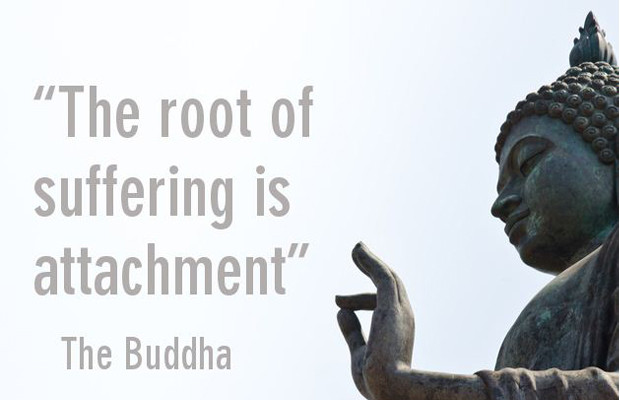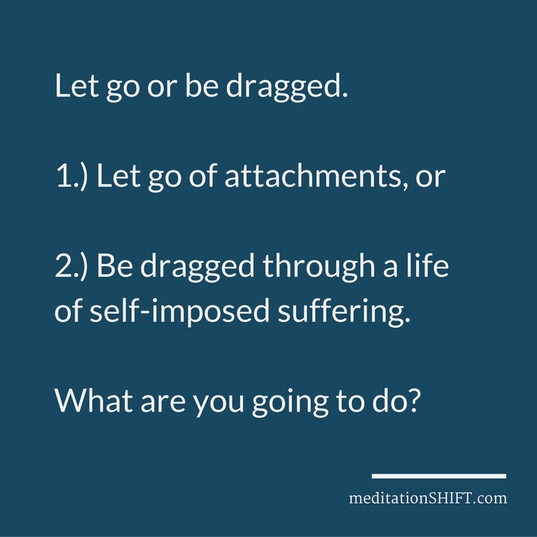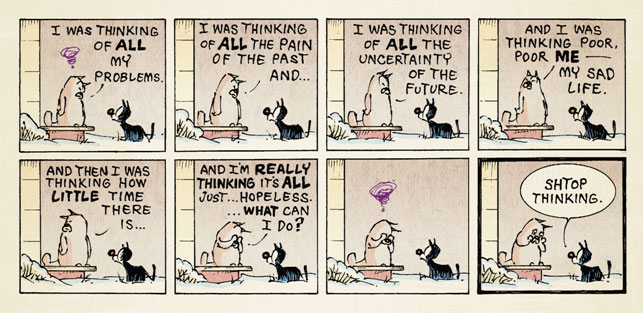|
We've revised our writing index to make it easier to find what you're looking for. We added a search box so you can look for articles by title or topic. And, we maintain a "most popular" list that is updated monthly. You can find everything here: Words: an index of articles from meditationSHIFT. Below are the ten most popular articles right now. Check the index above for the next 10! Stop being a victim of compulsive thinking. A short (2 minute) read with a cartoon. What more can you ask for? What type of meditation do I do? It's so confusing! Is there a certain type of meditation for "this," and one for "that?" And it seems there are a lot of different types (there aren't) - please help! (6-minute read) I want to overcome my anxiety by meditating! Can meditating help you overcome anxiety? Here's how to approach it. (3-minute read) How to meditate - short and simple. Basic instructions - easy to read and follow. (3-minute read) It's ok to be uncomfortable. Trying to avoid pain and chase pleasure only causes you to suffer - here's why. (5-minute read) The pursuit of happiness (or, stop looking for it "out there")! We spend our lives chasing happiness - looking for it in external objects (people, places, things). This is a trap of the mind, and leads to a life of "peaks and valleys." (5-minute read) Muddy water, mental noise, and Alan Watts. Analysis of a popular Alan Watts quote, and how it's relevant in today's busy world. (3-minute read) What Calvin and Hobbes taught me about mindfulness. (published on Medium) This is the most popular article we've ever written - short, insightful, and with cartoons! (4-minute read) You want enlightenment and liberation? Stop identifying with your thoughts! There are stories constantly running through your head, and most of them are not helpful. Stop believing what your mind tells you, and stop following it wherever it leads you. (5-minute read) My mind is too busy to meditate! One of many prevalent misconceptions. Everyone's mind is busy, which is why we need to meditate consistently. (5-minute read) < What are you trying to "cope" with?
Coping doesn't work - addressing the root cause does. We'll show you how. We take a "Fall Break" from writing in October to recharge and prepare for the end of one year and the beginning of another. Over the next few weeks, we will be posting some "best of" and "most popular" lists. We start today with the most popular article here and on the tad blog: Make sure you sign up to receive updates from us (no Spam, ever)! < What are you trying to "cope" with?
Coping doesn't work - addressing the root cause does. We'll show you how. note: we link to our free guide to mindfulness and meditation at the bottom of the page (no email required). Our last two musings have covered the topic of attachment: Wednesday is our traditional "weekly quotes" day - we examine quotes (or a story) related to mindfulness, meditation, living in the present moment, happiness, and similar topics. This week we are wrapping up attachment with some applicable quotes. As you read the following, remember what we said in our previous musing: >>> ...we encouraged you to take an honest assessment of your attachments. We discussed how attachments result from our desire to control an existence that is inherently uncontrollable. We ignore this fact, and attempt to create certainty and security amidst the changing nature of reality. As such, we continuously grasp or chase after the things we find pleasant, and push away or run from the things we find unpleasant. <<< We will start with this from Paulo Coelho: "It is best to accept life as it really is and not as I imagined it to be." Simply put, don't be attached to the image you have of yourself, others, or the world around you. As we always say: There's what's happening, and there's the stories our minds tell us about what's happening - the two rarely match. Next, a well-know quote form Heraclitus: "No man ever steps in the same river twice, for it's not the same river and he's not the same man." All experience is transient. Everything comes into being due to causes and conditions, it exists for a time, and it ceases. We create our own suffering when we attach to things that are always changing - when we try to make something impermanent into something permanent. As Sam Harris says: Ceaseless change is an unreliable basis for lasting fulfillment. The final two quotes speak to the futility of clinging to attachments, and offer analogies to avoid doing so. From Tich Nguyet Han: "Swallows fly in the sky, The water reflects their images. The swallows leave no traces, Nor does the water retain their images." And, from the book "Geeta Enlightened" by Yogi Mahajan: "Lao Tse say: 'When the sage walks he leaves no footprints behind.' He is in timelessness, where no one moment is more precious than the other. In his journey through life, the sage leaves no traces on the sands of the mind. He neither goes anywhere, nor comes from anywhere. Like a lotus leaf he remains untouched by the ripples of the water."
|







